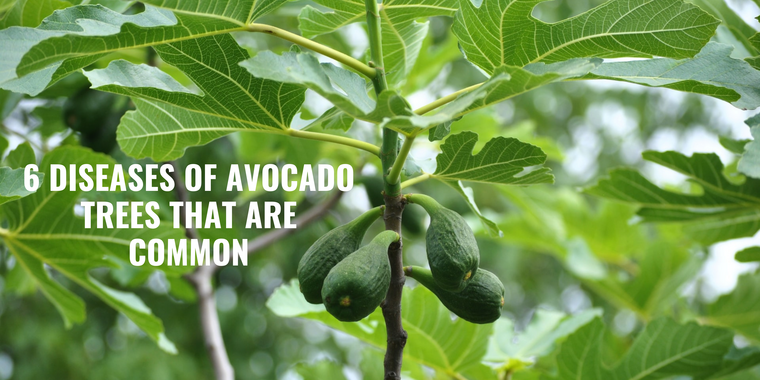
Avocado trees are often susceptible to several diseases that can cause leaves to curl, buds and flowers to wither, branches to die back, and overall poor health of the tree.
The most common diseases of avocado trees include bacterial spot, laurel wilt, anthracnose crown root, root rot, Phytophthora root rot, and powdery mildew.
Diseases of avocado trees vary depending on where you live, so knowing the common diseases that affect your avocado tree will help you prevent them or treat them appropriately when they appear in your garden.
Get Quotes from Tree and Plant Care Experts Today
1) Root Rot
At least two types of fungal pathogens cause root rot in avocado trees. Root rot is a serious disease, and infected trees should be removed as soon as possible.
To avoid infection, make sure new plants receive good drainage, maintain soil pH at 7.0 to 7.5 and choose cultivars that don't have susceptibility to root rot. If you already have an infected tree, properly dispose of it after cutting out diseased portions of its roots and rhizomes.
Rotate other crops within 500 feet of avocado trees. The most effective strategy is to keep your existing plants healthy; if they're already struggling with root rot, rotating them will give them time to recover before another bout occurs.
Additionally, if you’re planting a new tree from seed or from a grafted piece of rootstock, use disease-resistant varieties like 'Hass' or 'Zutano.' Some growers claim early diagnosis can help slow progression – for example, according to Texas A&M University Extension researchers' fungi often become active when soils dry out during hot weather but remain inactive when soils remain moist.
Monitor for telltale signs such as declining health or poor growth and act quickly when something seems off with your favorite tree.
2) Phytophthora Crown and Root Rot
This disease is caused by a water-borne fungus. The fungus attacks and penetrates through roots or crowns as well as leaves, stems, and branches. It causes leaf wilting, crown dieback, wood discoloration, branch dieback and plant death.
In order to treat phytophthora crown and root rot, you should immediately remove infected plants. For new plants choose strong healthy grafts with roots wrapped in polyethylene bags to prevent infection.
You will also need to watch over your soil and make sure it has good drainage while keeping it moist at all times. You will also need an integrated approach to manage phytophthora when having a grove that includes sanitation, crop rotation, and post-harvest disinfestation as well as cultural control such as copper-based bactericides during rainy periods in spring (March-May).
Using Copper-based bactericides for a longer period of time can result in toxic buildup of copper inside plants making them very sensitive for mites which might not be easily detected for early treatment especially at their early developmental stages causing heavy losses from outbreaks from only a few mites infestations.
Note: Do not use Copper Bactericide once you start shipping.
3) Phytophthora Crown, Stem and Root Rot
Phytophthora crown, stem, and root rot is one of six major diseases that affect avocado trees. Other diseases include collar rot, powdery mildew, root-knot nematodes, anthracnose, and bacterial canker.
Phytophthora is caused by water or soil fungi known as oomycetes. This fungus attacks avocado roots and stems in wet conditions and stunts growth. Watering plants from above and using mulch around plant bases help prevent these conditions from occurring.
4) Bacterial Canker
Bacterial canker (Xanthomonas Campestris PV. Peruvianae) is a bacterial disease that causes oval-shaped lesions to form on leaves, stems, and fruit. In severe cases, cankers girdle branches, which can result in defoliation and tree death.
Bacterial canker may be transmitted through grafting or by pruning tools that have not been sterilized properly.
It is important to begin control measures immediately when bacterial canker symptoms appear; infected trees need to be completely removed from an area or they may spread bacteria through their roots or fruits.
5) Mexican Fruit Fly
If you have Mexican fruit flies, there’s nothing to do but pull up your plants and dispose of them. Unfortunately, they can quickly spread to other plants.
Because they lay their eggs in fruit (which is why it’s called a fruit fly), it’s important to learn what symptoms to look for early on so you can treat them before too much damage is done.
If you spot signs like small dark spots on an avocado seed—or even a full-grown avocado tree—contain the problem by cutting away any infested fruits or branches and disinfecting your pruning tools with a mixture of one part bleach and nine parts water after each cut.
6) Brown Soft Scales
If you’re struggling with a scale infestation, consider using a systemic insecticide. Systemic treatments such as Imidacloprid (Bayer Advanced Tree and Shrub Insect Control Concentrate) are absorbed by foliage and translocated to other parts of your tree; they target insects when they ingest treated leaves.
Baits such as Oftanol (Oftanol 2L Systemic Tree Injectable Concentrate) also work well. Be sure to follow label instructions for dosage and application time to avoid damage to your plant.
Apply once every two weeks during high-mortality periods in spring and summer until you have achieved control.
1. Register your company
2. Create a searchable listing
3. Connect with more clients
